Netvue Birdfy Bamboo review: the sustainable and stylish bird feeder
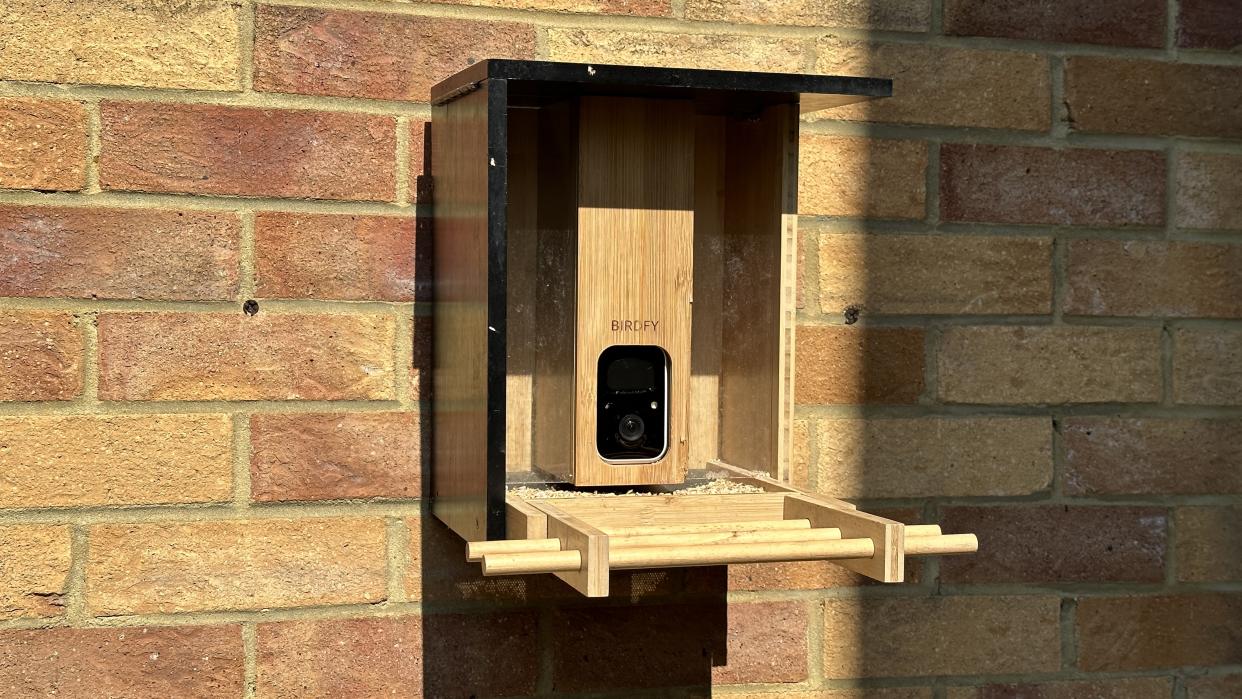
Two-minute review
We have already reviewed Netvue’s Birdfy AI feeder, and the latest Bamboo version is based on the same core technology. At the time of writing this review, the Netvue Birdfy Bamboo is available for pre-order, with it shipping in mid-September 2023.
The big selling point of this latest model is the construction. Gone is the generic-looking molded plastic, replaced with sustainable bamboo boards. The exterior boards are painted black, helping to protect the natural materials and adding a stylish touch. Indeed, the Birdfy Bamboo has a very minimalist modern design. It is a great-looking birdfeeder that looks as good mounted on a tree as it does on a wall. It looks so good that it will form a talking point when people see it.
The change from plastic to bamboo comes at the cost of having a larger and heavier feeder. It measures 280mm x 280mm x 300mm and weighs 4.6kg, compared to 220mm x 225mm x 270mm and 1.35kg for the standard Netvue Birdfy. That is a big difference in size, but more significantly, weight, which has a knock-on effect on mounting the feeder.
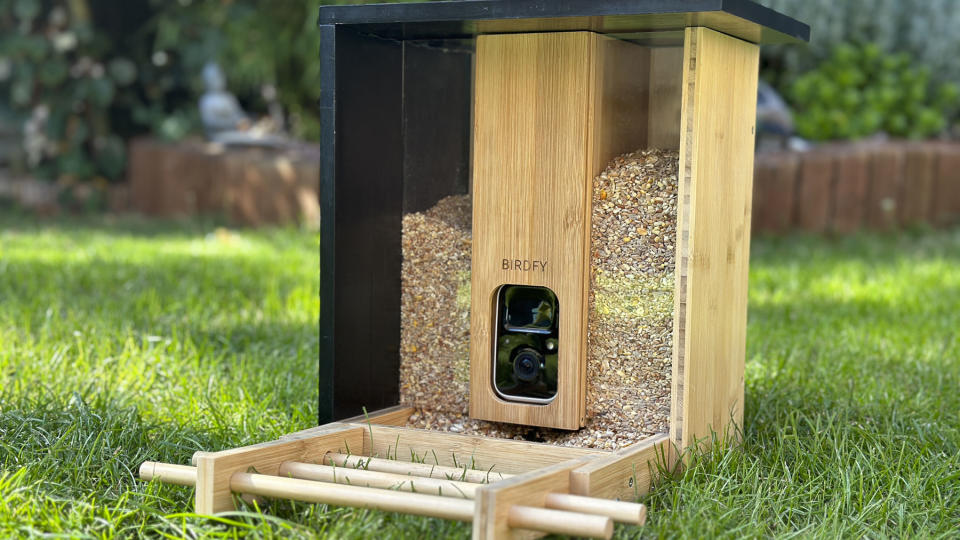
The adjustable L mounting bracket found in the standard Netvue Birdfy has gone, replaced with a solid metal mounting plate on the rear. This allows you to fix masonry screws to an exterior wall, fence or shed for secure mounting. However, if you want to mount the feeder to a tree like I did, you still can. A significantly larger and stronger strap is included that feeds through the mounting plate on the rear of the feeder and can wrap securely around a tree trunk. Metal clasps create a tight, secure grip so the feeder doesn’t slip. I successfully mounted it to a tree trunk, where it stayed firmly in place for several weeks.
The camera is housed within its own central compartment, inside the middle of the bamboo feeder, and it is accessed by unclipping the front panel. Bird seed is added by lifting the hinged roof to one side and pouring it into compartments on either side of the camera. The floor of the feeder has a fine mesh so that any rainwater can escape through. Two screws attach to the front bamboo perch; it is a simple design with no significant construction work needed.
Netvue Birdfy Bamboo price and release date
The Netvue Birdfy Bamboo has a list price of $259 and US only pre-orders also receive a solar panel worth $29.99 at no extra cost. Pricing in UK and Australia is TBC.
In terms of the camera itself, it is the same 1920x1080 Full HD security-style camera found in the existing Birdfy. Setting it up is done via the Netvue app, which is available for both iOS and Android, and the connection is started by using a QR code on the camera to help connect and initialize. Connecting to my 2.4Ghz network took a minute or so, and even though the 5dBi antenna is now enclosed within the bamboo, I found it didn’t affect the signal strength with any significance.
The quality of the footage from the complete HD footage captured by the camera is as good as other security cameras. One thing to note compared to the regular Netvue Birdfy is that the side of the feeder is visible in the image. It also means that at certain times of the day, birds that come very close to the camera, rather than sitting on the perch, might be in shadow.
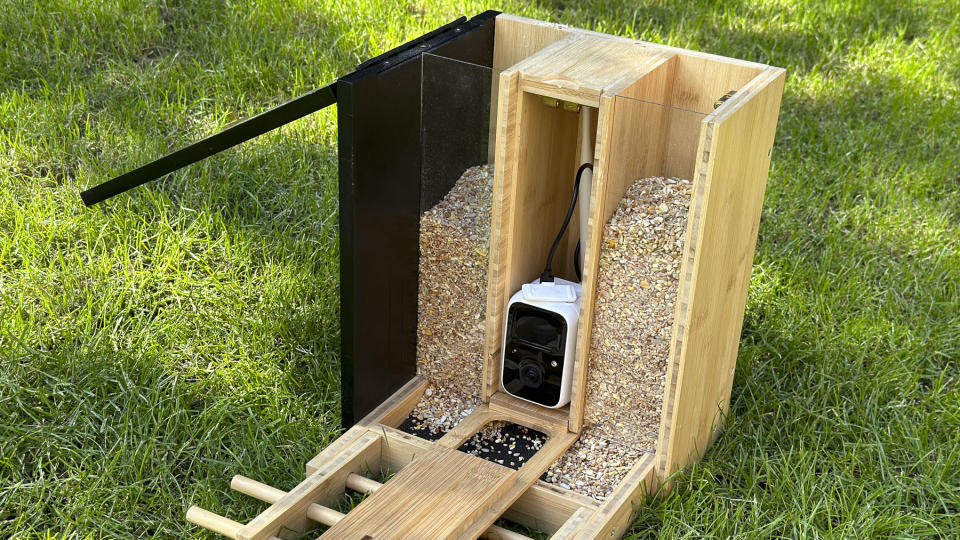
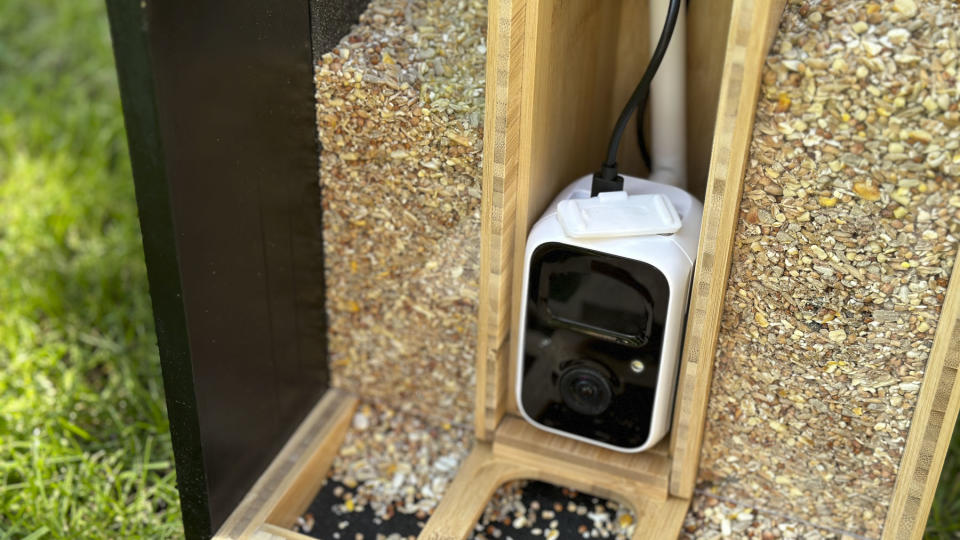
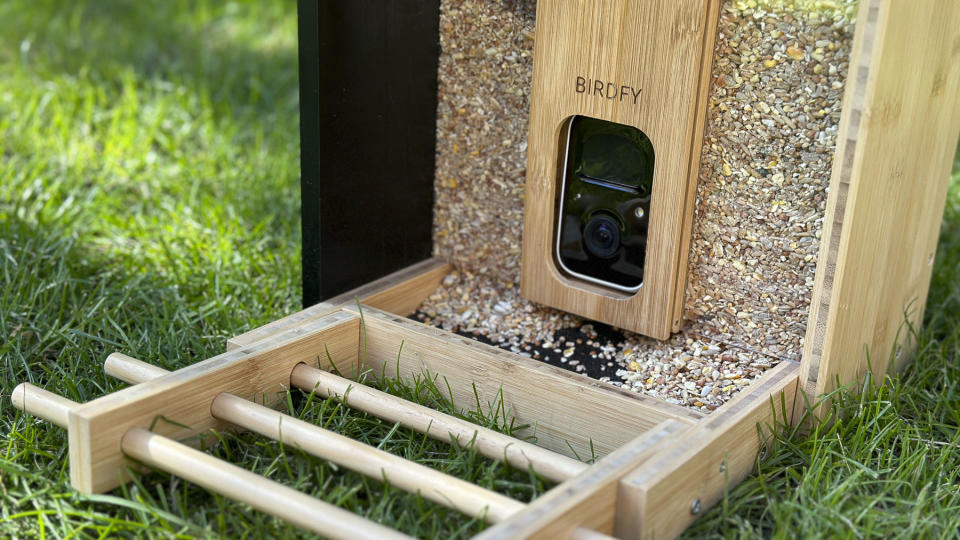
Photos and video can be saved to a Micro SD on the camera, but the clips, which can be between 10-30 seconds, are also saved online for 30 days. I had no issue hitting the download button from within the app and saving the video footage to my photos for sharing on social media.
I found that the internal battery lasts for a week or two, depending on how many alerts and notifications you receive and how often you live stream the current camera view through the app. Netvue includes a solar panel worth $29.99, with pre-orders. I have now had the original Netvue Birdfy mounted in my garden with the solar panel over the summer months, and I haven't had to charge the battery, and it is showing as fully charged. I imagine this will change in the winter, but the solar panel will potentially mean that you don't have to worry about ever charging the battery. The solar panel has a USB-C connection, which slots into the camera's top, and the cable can be fed through the rear of the Bamboo.
Like the Birdfy, I received regular alerts within a second or so of a bird landing. The notification would use the AI recognition to tell me which bird had landed, which was reasonably accurate. The AI claims to be able to recognize 6,000 birds, though sadly, I only have the ability to test it on the 4-5 species that regularly visit my feeders. The AI gets confused when a pigeon or squirrel has got very close to the camera, and it mistakes it for something else, presumably based on color. Also where there are very similar birds, and the light is a little dark - for example, a Blue Tit as a Great Tit. As this is AI, recognition will only improve in time.
As mentioned, the app can also recognize squirrels and alert you if a squirrel is on your feeder. It will also suggest using the camera's built-in alarm to scare the squirrels away. This works the first time, but the squirrels get wise to the alarm quite quickly.

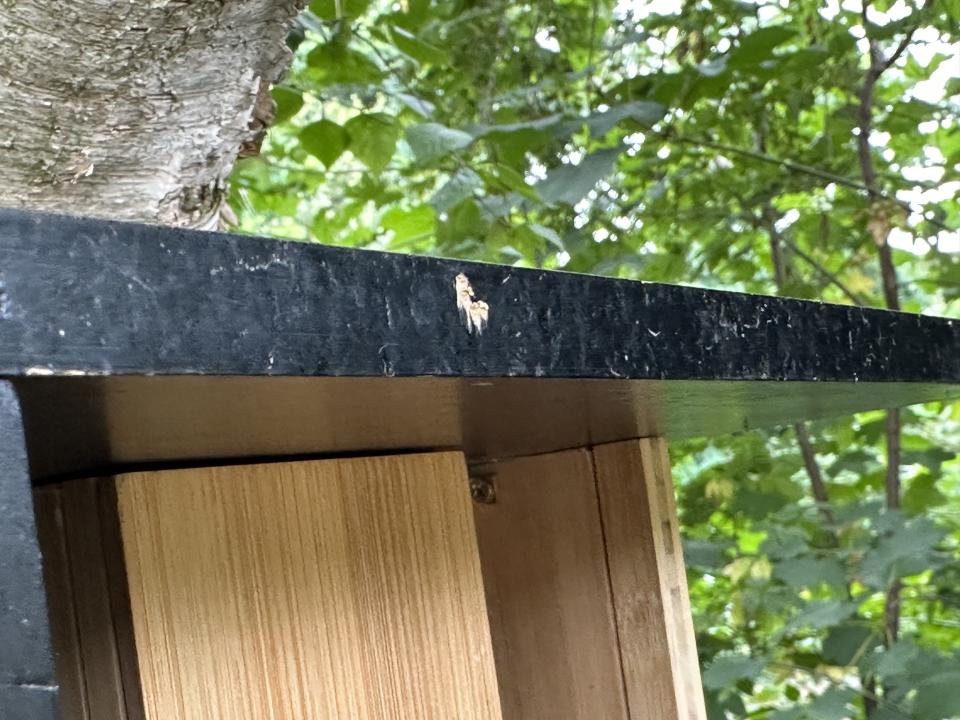
Squirrels are also the downside of the Netvue Bamboo; the bamboo is more susceptible to damage from them than plastic. I found that the squirrels were scratching and gnawing at the bottom of the bamboo to get to the last seeds. They managed to break a bit of it off. Similarly, there are a few scratch marks on the black paint where they have used their claws to grip the feeder (see above). With this in mind, it would be hard to recommend the Bamboo feeder for those with squirrels living nearby. They would do too much damage to what is an expensive bird feeder that looks less the part when damaged. I have taken mine down from the tree in my garden and will be mounting it on my house, where the squirrels are less likely to scale the wall.
In summary, the Netvue Birdfy Bamboo is a highly stylish birdfeeder camera system that is bound to get people talking when they see it in your garden. The camera system works well, but you’ll need to be careful if squirrels are regular visitors to your garden.
Should I buy the Netvue Birdfy Bamboo?
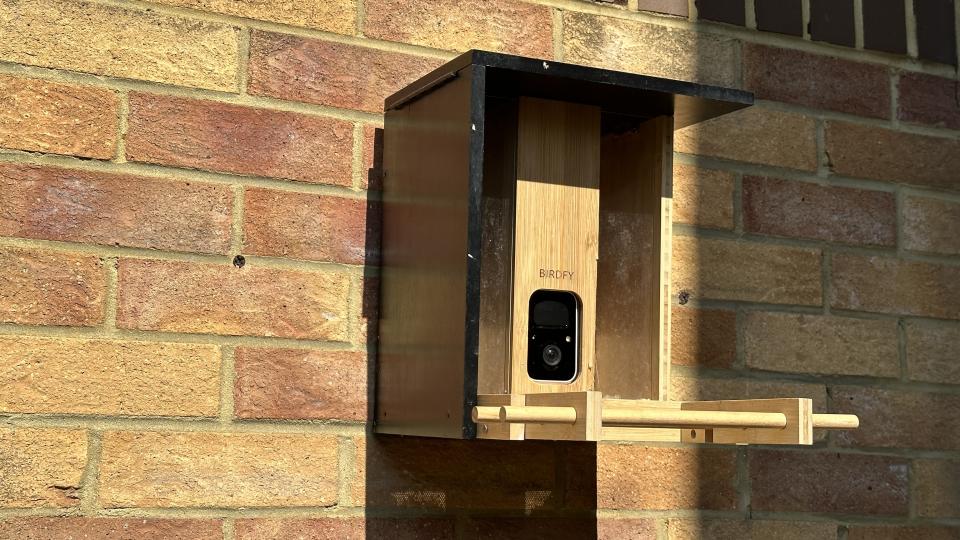
Buy it if...
Don't buy it if...
How I tested the Netvue Birdfy
Weeks mounted to a tree
Viewed and downloaded video footage
Tried AI Bird Recognition
Each bird feeder camera that I test gets mounted in my garden and left for several days. In the first instance, I look at how easy it is to assemble, install, and use the bird feeder, plus assess how the birds react to using the feeder. This includes mounting the feeder to a tree and a wall and assessing other mounting options.
Power is a significant consideration, so I test how easy it is to charge the camera batteries and how often you will need to set them - though generally, each will last for about a week, depending on various circumstances and individual use. I also look at alternative power options, including the ability to recharge from a battery bank or a solar panel.
Then, there is the app that allows you to view the footage remotely. While most of these operate similarly, each has its quirks, and I look at how easy each app is to use and assess the image quality itself. If the app includes bird recognition, we will comment on how accurate this is, having hopefully tried it on a small variety of garden birds found in the UK.
Finally, there is the weather. It is expected that each camera can withstand a variety of different weather conditions. While I can't test for every eventually, I will at least ensure that each camera has been out in the rain and lived to tell the tale.
First reviewed September 2023


